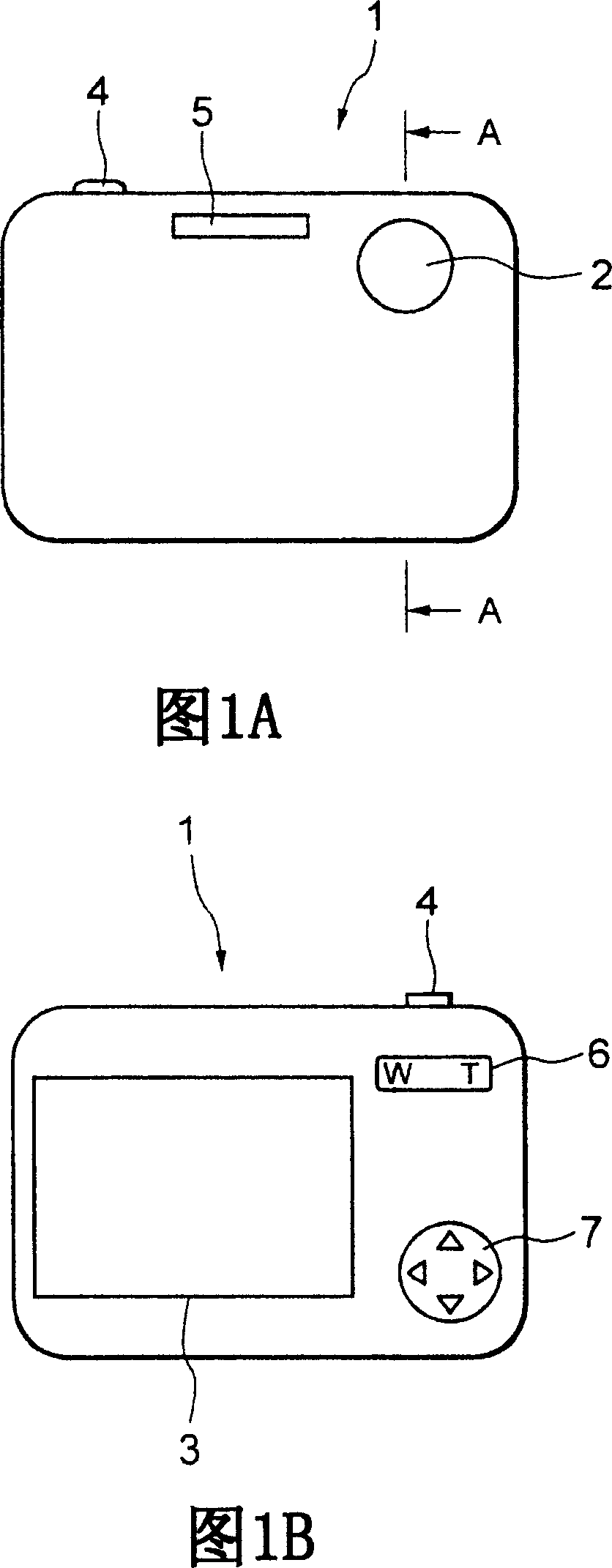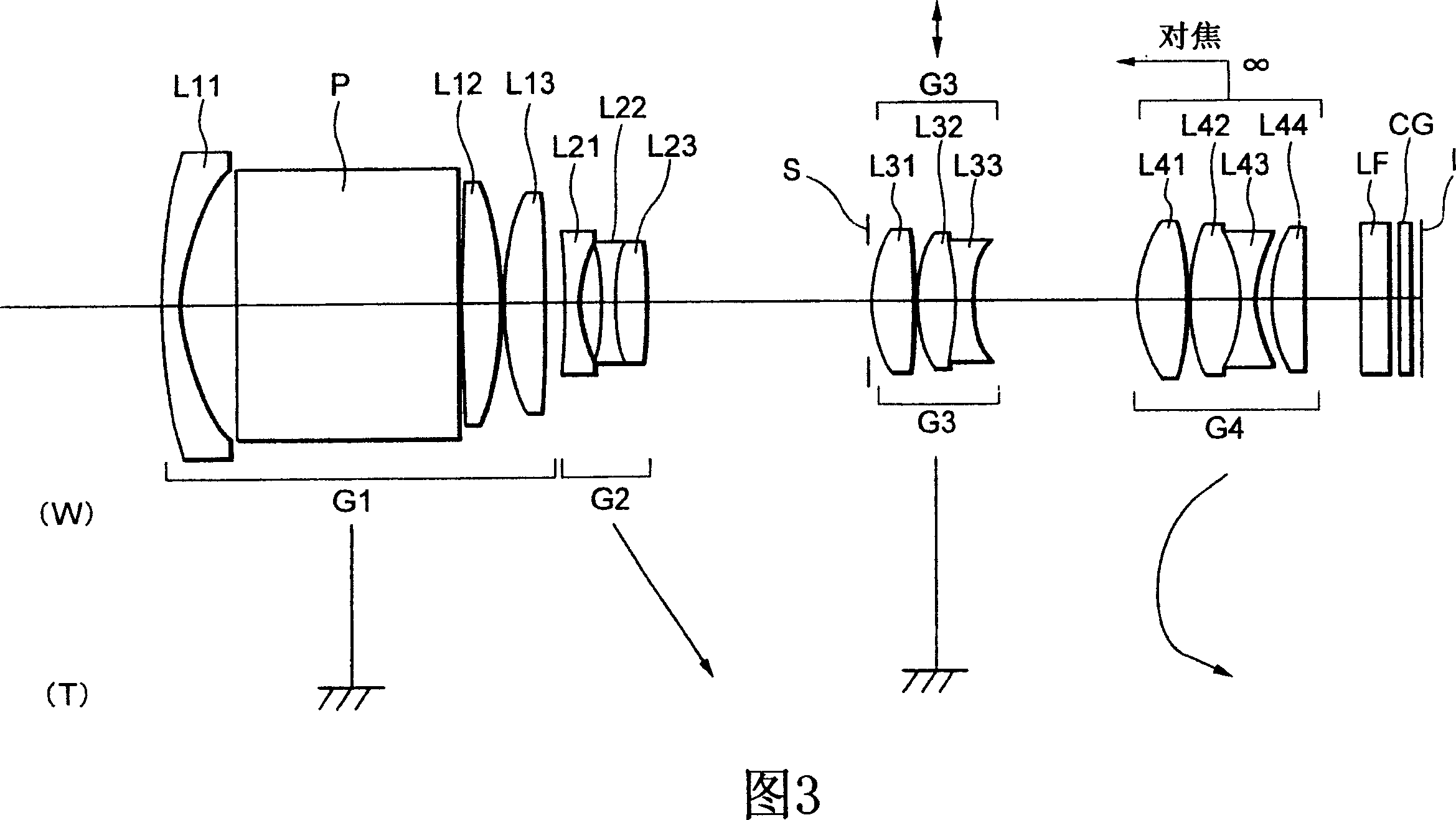Zoom lens system and optical device using thereof
A zoom lens and lens group technology, applied in optics, optical components, instruments, etc., can solve problems such as blurred images and reduced image performance
- Summary
- Abstract
- Description
- Claims
- Application Information
AI Technical Summary
Problems solved by technology
Method used
Image
Examples
no. 1 example
[0080] The zoom lens system according to the first embodiment will be described below.
[0081] The zoom lens system according to the first embodiment of the present invention, in order from the object, includes: a first lens group having a positive refractive power and having an optical path bending element for bending an optical path by substantially 90 degrees; having a negative refractive power the second lens group having positive refractive power; the third lens group having positive refractive power; and the fourth lens group having positive refractive power. When the focal length changes from the wide-angle end state to the telephoto end state, that is, when zooming, the first lens group and the third lens group are fixed relative to the image plane, the second lens group moves toward the image plane, and the fourth lens group moves toward the image plane. The lens groups initially move toward the object and then move toward the image plane such that the distance betwe...
example 1
[0105] 3 is a schematic diagram showing a lens configuration of a zoom lens system according to Example 1 of the first embodiment. Although the zoom lens system according to Example 1 deflects its optical path by 90 degrees as shown in FIG. 2 , the optical path extends in FIG. 3 .
[0106] In FIG. 3 , the zoom lens system according to Example 1 is composed, in order from the object, of the following components: a first lens group G1 having a positive refractive power and having a rectangular prism P for bending the optical path by substantially 90 degrees ; the second lens group G2 with negative refractive power; the third lens group G3 with positive refractive power; and the fourth lens group G4 with positive refractive power. When the focal length changes from the wide-angle end state W to the telephoto end state T state, the first lens group G1 and the third lens group G3 are fixed relative to the image plane I, and the second lens group G2 moves toward the image plane I ,...
example 2
[0203] 8 is a schematic diagram showing a lens configuration of a zoom lens system according to Example 2 of the first embodiment. Although the zoom lens system according to Example 2 deflects its optical path by 90 degrees as shown in FIG. 2 , the optical path extends in FIG. 8 .
[0204] In FIG. 8, the zoom lens system according to Example 2 is composed, in order from the object, of the following components: a first lens group having positive refractive power and having a rectangular prism P for bending the optical path by substantially 90 degrees G1; a second lens group G2 having negative refractive power; a third lens group G3 having positive refractive power; and a fourth lens group G4 having positive refractive power. When the focal length changes from the wide-angle end state W to the telephoto end state T state, the first lens group G1 and the third lens group G3 are fixed relative to the image plane I, and the second lens group G2 moves toward the image plane I , and...
PUM
 Login to View More
Login to View More Abstract
Description
Claims
Application Information
 Login to View More
Login to View More - R&D
- Intellectual Property
- Life Sciences
- Materials
- Tech Scout
- Unparalleled Data Quality
- Higher Quality Content
- 60% Fewer Hallucinations
Browse by: Latest US Patents, China's latest patents, Technical Efficacy Thesaurus, Application Domain, Technology Topic, Popular Technical Reports.
© 2025 PatSnap. All rights reserved.Legal|Privacy policy|Modern Slavery Act Transparency Statement|Sitemap|About US| Contact US: help@patsnap.com



